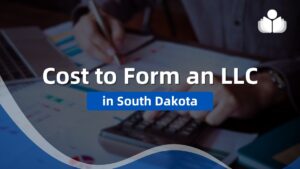© Copyright Carter McNamara, MBA, PhD
Applies to for-profits unless otherwise noted.
New business leaders and managers have to develop at least basic skills in financial management. Expecting others in the organization to manage finances is clearly asking for trouble. Basic skills in financial management start in the critical areas of cash management and bookkeeping, which should be done according to certain financial controls to ensure integrity in the bookkeeping process.
New leaders and managers should soon go on to learn how to generate financial statements (from bookkeeping journals) and analyze those statements to really understand the financial condition of the business. Financial analysis shows the “reality” of the situation of a business — seen as such, financial management is one of the most important practices in management. This topic will help you understand basic practices in financial management, and build the basic systems and practices needed for a healthy
business.
Sections in This Topic Include
Basics and Getting Started
Activities in the Yearly Accounting Cycle
Planning and Cash Management
- Financial Planning
- Budgeting and Managing a Budget
- Managing Cash Flow
- Credit and Collections
- Budget Deviation Analysis
Financial Statements, Analysis and Reporting
Evaluating Your Financial Practices
Evaluating Your Financial Management Practices
Special Topics
General Resources
Various Types of Financial Resources
Also consider
Related Library Topics
BASICS AND GETTING STARTED
Basics of Financial Management
Role of Treasurer and Board Finance Committee
If your small business is a corporation, you would do well to find someone experienced in financial management and encourage them to be your board treasurer (your board chair has this responsibility
to find someone suitable, as well). Therefore, it’s important to understand the role of the board treasurer.
Getting an Accountant or Bookkeeper, If Needed
If you are inexperienced in financial management, then you should get an accountant initially to help you set up your bookkeeping system, generate financial statements, and do some basic financial analysis. But don’t count on an accountant to completely take over your responsibility for financial management!
The accountant can help you set up a bookkeeping system, generate financial statements, and analyze them, but you have to understand financial data to the extent that you can understand the effects of your management decisions, the current condition of your business, and how decisions will affect the financial condition of your business in the future.
You should carefully consider whether you should hire an outside accountant, or hire your own employee. The IRS pays increasing attention to the hiring of independent contractors.
Hiring Consultants
The following link might help you when you establish a contract with an accountant.
Business Contracts (this will be useful if you sign any contracts with the accountant)
Also, consider
Various Types of Resources
Buy Accounting Software to Help You?
Strongly consider getting a software package to manage your books! There are a number of very useful software packages that will help you automate bookkeeping, the generation of financial statement,s and their analysis. Note that an accounting software package can greatly reduce the time to enter and manage accounting transactions, and generate financial statements.
However, you still should have at least a basic understanding of the accounting process for your organization, including what journals are used and what general accounts exist. You must have good understanding of financial statements and how to analyze them — an accounting package cannot do this for you!
- Accounting Software (this link is to “Software for Small Computer Systems”)
- What Type of Bookkeeping System Should you use?
- How to Automate Payroll
Getting a Bank and Banker
You’ll need to start a business account at a bank. Probably the best way to find a good bank is to ask for advice and references from other small businesses, especially those that are of the size and nature of yours. If you’re just starting out, you probably don’t have much money. You may be able to get buy with a non-interest-bearing checking out that has no, or minimal, fees. The following links may be useful
Getting and Using a Banker
Also consider
Various Types of Resources
Basic Overview of For-Profit Financial Management
To get an overall sense of the recurring financial activities in the typical, read the following articles. (You’ll soon get the more basic information below in the section titled “Bookkeeping Basics”.)
- Basics of Financial Management in U.S. Small For-Profit Businesses
- Financial Management Training Center
- Basic Accounting Lesson Plans and Worksheets
Other sites that you might benefit from are:
- Bookkeeping 101: A Beginning Tutorial
- Online Learning Center’s tutorial
- Financial Accounting for Owners, Managers, and Administrators
- Free Introductory Accounting and bookkeeping Tutorial
- Business Plan: Finances of a Small Business
Understanding Bookkeeping and Accounting
Basics financial management starts with good record keeping. Be sure that you’ve read the above-mentioned article Basics of Financial Management in U.S. Small For-Profit Businesses before you continue reading the links listed below.
If You Want to Learn All About Bookkeeping and Accounting, Start Here
These sites provide an online tutorial about the basics of bookkeeping and accounting. Don’t worry about thoroughly understanding every term and process. But do think about what you’re reading in order to get a strong “feel” about the process of accounting.
- Basic Guide to Financial Statements
- Bookkeeping 101 (tutorial)
- Introduction to Bookkeeping
- Introduction to Accountancy
Classification of Accounts (for Chart of Accounts)
In accounting, different types of financial transactions (e.g., paying telephone bills, copier bills, getting money from sales, getting money from interest income, etc.) are assigned specific numbers (account numbers) which help to record and track those types of transactions. Businesses might create their own list (or chart) of accounts or adopt a chart used by other organizations. In any case, you should have some basic impression of a chart of accounts. The following links will help you.
- Setting Up a Chart of Accounts
- Develop the Chart of Accounts for your Small Business
- Chart of Accounts Definitions
Addressing Financial Controls and Risk Management
Financial controls exist to help ensure that financial transactions are recorded and maintained accurately and that personnel don’t unintentionally (or intentionally) corrupt the financial management system. Controls range from very basic (e.g., using a checkbook and cash register tapes to more complex, e.g., yearly financial audits).
- Internal Financial Controls for a Small Business
- Top 20 Financial Controls to Protect Your Company from Fraud, Theft and Embezzlement
- Fraud Symptom 1 Insatiable hunger of CEO
- Fraud Symptom 2 A Weak CFO
- Fraud Symptom 5 Insufficient focus on organization culture and processes
The following link is to a variety of links about controls to prevent intentional subversion of the financial management system.
Protecting Against Theft, Fraud, Forgery, etc.
Also consider
CRITICAL OPERATING ACTIVITIES IN THE YEARLY ACCOUNTING CYCLE
Now that you have a basic sense of the overall accounting and financial management process, we’ll look at the key parts at the beginning of the overall process, including budgeting, managing cash and credit.
Financial Planning
Financial planning works from the strategic and business plans to identify what financial resources are needed to obtain and develop the resources to achieve the goals in the two types of plans. Typically, financial planning results in very relevant and realistic budgets — budgets are addressed later on in this
topic. So be sure to consider business planning for each of your products and services.
- Financial Planning in Business (Wikipedia)
- Small Business Financial Planning — the Basics
- 7 Tips for Business Forecasting
- The Ultimate Guide to Setting SMART Financial Goals
- Course 2: Financial Planning and Forecasting
- Strategic Planning
- Business Planning
Budgeting and Managing a Budget
A budget depicts what you expect to spend (expenses) and earn (revenue) over a time period. Amounts are categorized according to the type of business activities, or accounts (for example, telephone costs, sales of catalogs, etc.).
Budgets are useful for planning your finances and then tracking if you’re operating according to plan. They are also useful for projecting how much money you’ll need for a major initiative, for example, buying
a facility, hiring a new employee, etc. There are yearly (operating) budgets, project budgets, cash budgets, etc. The overall format of a budget is a record of planned income and planned expenses for a fixed period of time.
- Small Business Budgeting
- The Three Primary Types of Financial Capital
- Is Your Budgeting Process Killing Your Strategy?
Managing Cash Flow
As a new business, your biggest challenge is likely to be managing your cash flow — probably the most important financial statement for a new business is the cash flow statement. The overall purpose of managing your cash flow is to make sure that you have enough cash to pay current bills.
Businesses can manage cash flow by examining a cash flow statement and cash flow projection. Basically,
the cash flow statement includes total cash received minus total cash spent. Cash management looks primarily at actual cash transactions.
(Thanks to the Women’s Business Center for a very useful set of links!)
Basics of Cash Management
- The Importance of Cash Management
- Techniques for better cash flow management
- Techniques for Improving Cash Flow
- Man oh Man, Don’t Run Out of Cash
Preparing a Cash Flow Statement
- Preparing Your Cash Flow Statement
- Cash Flow Worksheet
- All About Cash Flow Analysis for Your Small Business
Preparing Cash Flow Projections and Forecasts
- More information on doing cash flow forecast
- How to Make Cash Flow Projections
- Short-Term Cash Flow Projections
Managing Your Checking Account
For a new business, your check register very likely will be your primary means to record and track cash. Whether yours is a new business or an established business, you’ll need to know how to manage your bank account. See
Credit and Collections
One of your biggest challenges in managing cash flow may be decisions about granting credit to customers or clients, and how to collect payment from them.
Budget Deviation Analysis
You learned above that a budget depicts what you expect to spend (expenses) and earn (revenue) over a time period. Budget deviation analysis regularly compares what you expected, or planned, to earn and spend with what you actually spent and earned.
The budget deviation analysis can help greatly when detecting how well you’re tracking your plans, how much to accurately budget in the future, where there may be upcoming problems in spending, etc. A budget deviation analysis report might include columns with titles:
|
Planned for Month |
Actual for Month |
Difference (planned minus actual) |
% Deviation (Difference x 100) |
Test – What is the Quality of Your Financial Management Practices Now?
Before reading more about this topic, you might get an impression of your own financial knowledge and practices.
So, based on the results of the test, what do you want to improve? Consider the guidelines in the rest of this topic.
ACTIVITIES IN YEARLY ACCOUNTING CYCLE: Financial Statements
and Analysis
Financial Statements
To really understand the current and future conditions of your business, you have to look at certain financial statements. These statements are generated by organizing and analyzing numbers from your accounting activities.
You should understand the two primary financial statements, the Profit and Loss Statement (or Income Statement) and the Balance Sheet. (Some sources believe that there are other primary statements, too, such as the cash flow statement or change in capital, etc.
However, the Income Statement and Balance Sheet are the two standard statements for any business.) The following links will give you an overview of these two key statements, and we’ll get into them in more detail later on below. Here are several perspectives on the statements.
- Basic Guide to Financial Statements
- The Accounting Journal – An Important Part of the Bookkeeping Process
- Using Financial Statements
- How to Read and Understand Financial Statements
- Understanding Financial Statements
- Financial Accounting and Financial Statements
Profit and Loss (Income) Statements
These “P and L” statements depict the status of your overall profits. These statements include how much money you’ve earned (your revenue) and subtract how much you’ve spent (your expenses), resulting in how much you’ve made money (your profits) or lost money (your deficits). Basically, the statement includes total sales minus total expenses. It presents the nature of your overall profit and loss over a period of time. Therefore, the Income Statement gives you a sense of how well the business is operating.
Balance Sheets
Whereas the P and L statement depicts the overall status of your profits (or deficits) by looking at income and expenses over a period of time, the balance sheet depicts the overall status of your finances at a fixed point in time. It totals your all your assets and subtracts all your liabilities to compute your overall net worth (or net loss). This statement is referenced particularly when buying or selling a business, or applying for funding. Here are several perspectives.
Financial Analysis
Financial analysis can tell you a lot about how your business is doing. Without this analysis, you may end up staring at a bunch of numbers on budgets, cash flow projections, and profit and loss statements. You should set aside at least a few hours every month to do a financial analysis. The analysis includes cash flow analysis and budget deviation analysis mentioned above.
Analysis also includes balance sheet analysis and income statement analysis. There are some techniques and tools to help in financial analysis, for example, profit analysis, break-even analysis, and ratios analysis that can substantially help to simplify and streamline financial analysis.
How you carry out the analysis depends on the nature and needs of you and your business. The following links will help you get a sense of the “territory” of financial analysis.
Profit Analysis
There are a variety of ways to help determine the profitability of your business.
- Calculating Profitability Ratios (scroll down)
- Cost-Volume-Profit Analysis
- Calculate Cash Flow Ratios When Doing Financial Analysis
Break-Even Analysis
The break-even analysis uses information from the income statement and cash flow statements to compute how much sales must be accomplished in order to pay for all of your fixed and variable expenses.
Fixed expenses are expenses that you’d have regardless of the level of sales of products or services (e.g., sales, rent, insurance, maintenance, etc.). Variable expenses are incurred according to the level of sales of products or services (e.g., sales commissions, sales tax, freight to ship products, etc.). Break-even analysis can help you when projecting when you’ll make a profit, deciding how much to charge for a product, setting a sales goal, etc.
Ratios
There are a variety of ratios that can be used to help determine the current and future condition of a business. The following links provide explanations and procedures for using those ratios. The ratios are produced from numbers on the financial statements. Note that the usefulness of ratios often are from
comparing ratios from different time periods in the same business or from industry standards for a type of business, e.g., manufacturing, wholesale, service, etc.
- Overview of major types of ratios and how they’re computed
- Financial Ratio Analysis (Definition)
- Financial Ratios (different types)
Evaluating Your Financial Management Practices
The following assessment tool asks about each of the best practices and can give a good impression of the overall quality of financial management practices in a business.
Evaluation of Financial Management Practices in Businesses
SPECIAL TOPICS
Financing Major Purchases
Cost Cutting
- Business Cost-Cutting Ideas
- Cost-cutting ideas for Small Businesses
- Commentary: Cost-saving measures for businesses short of layoffs
- 26 Cost Cutting Ideas for Your Small Business to Reduce Expenses
- Temporary Cost-Cutting Measures Violate the Wage and Hour Laws
- Recession Cost-Cutting No-Nos
Boards and Understanding Financials
- Scrutinizing Financial Statements
- The Sum of All Parts: Redesigning Financials
Also consider
Organizational Sustainability
GENERAL RESOURCES
Various Types of Financial Resources
Sources of Online Assistance and Information
Getting and Using Banking Services
Have a Treasurer to Help You?
Officers and Roles – Treasurer
Accounting Software
Business Calculators
Also consider
- Business accounting and finance advice covering bookkeeping, cash flow, and payroll
- Getting and Using a Lawyer in the U.S.
- All About Business Finance
- Supersites
Learn More in the Library’s Blogs Related to Financial Management in Businesses
In addition to the articles on this current page, also see the following blogs that have posts related to Financial Management in Businesses. Scan down the blog’s page to see various posts. Also, see the section “Recent Blog Posts” in the sidebar of the blog or click on “Next” near the bottom of a post in the blog. The blog also links to numerous free related resources.
- Library’s Business Planning Blog
- Library’s Building a Business Blog
- Library’s Strategic Planning Blog
For the Category of Financial Management (For-Profit)
 Sections of this topic
Sections of this topic
















